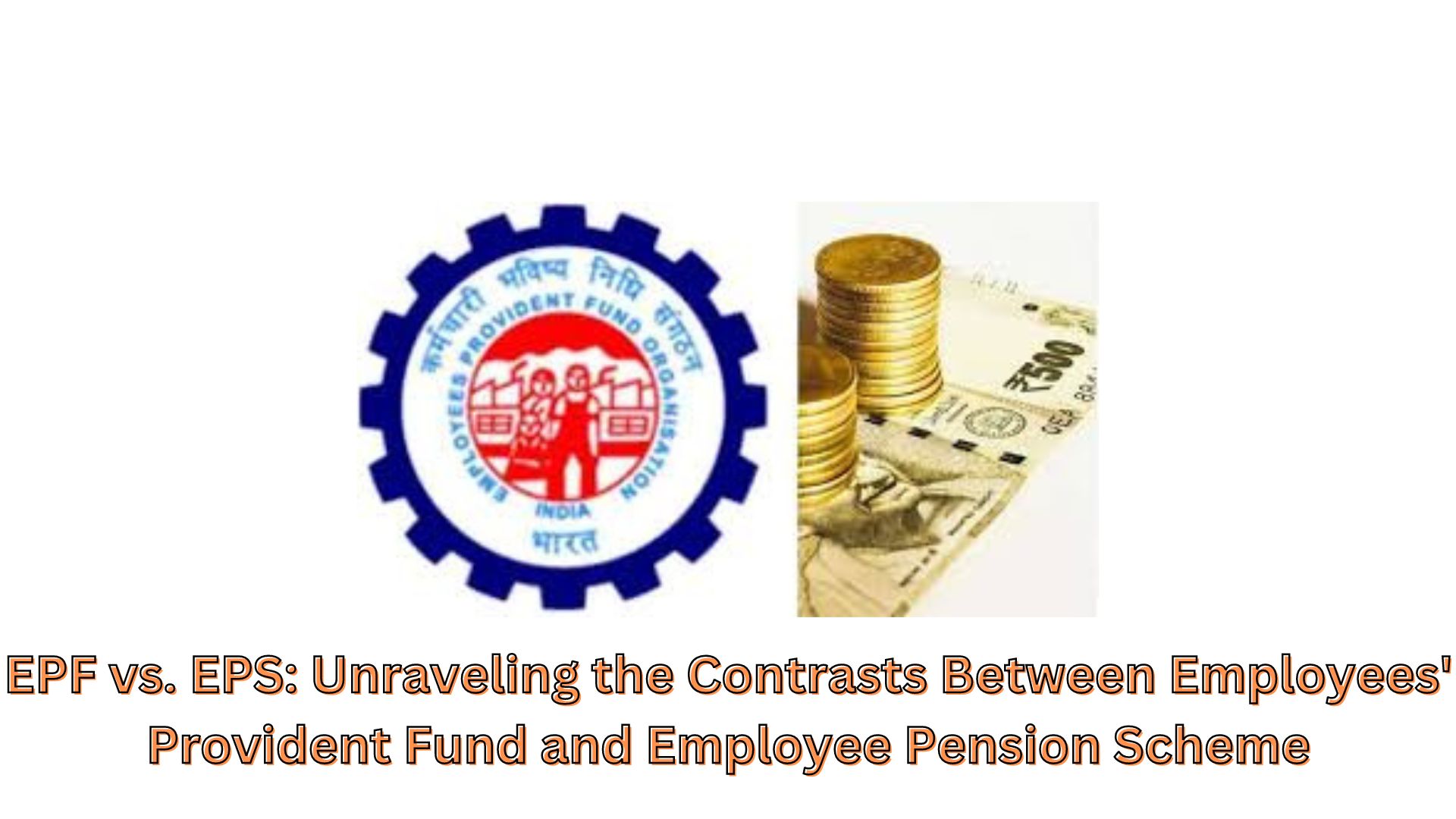
The Employee Provident Fund (EPF) and Employee Pension Scheme (EPS) are pivotal retirement schemes in India, each with distinct features. While both aim to secure employees’ futures, it’s essential to understand their discrepancies. Here’s a clear comparison between EPF and EPS:
Understanding the EPF Scheme: The Employees’ Provident Fund (EPF) is a crucial safety net designed to offer financial stability during retirement. It operates as a savings scheme where both employees and employers make monthly contributions, accumulating a significant corpus over time.
Exploring the EPS: On the other hand, the Employee Pension Scheme (EPS) is an extension of the EPF, focusing on pension benefits. While the EPF ensures a lump sum amount post-retirement, the EPS guarantees a regular pension to qualifying employees.
Key Differences: EPF vs. EPS
- Contribution to the Scheme: Employees contribute 12% of their salary along with dearness allowance to EPF, while employers contribute 3.67% of the salary plus dearness allowance. EPS doesn’t require employee contributions, with employers contributing 8.33% of the salary plus dearness allowance to EPF.
- Contribution Limit: EPF contributions vary based on a percentage of the salary plus dearness allowance, while EPS caps monthly contributions at Rs. 1250.
- Applicability: EPF is universally accessible, while EPS is exclusive to employees with a salary plus dearness allowance below Rs. 15,000.
- Withdrawal: EPF allows flexible withdrawals, subject to taxation if withdrawn before completing 5 years of service. EPS permits early lump sum withdrawal under specific conditions.
- Benefit Payable: EPF offers a lump-sum benefit upon retirement or prolonged unemployment, while EPS disburses a regular pension upon reaching the age of 58, continuing to the nominee in case of the employee’s demise.
- Interest: EPF balances accrue interest at a fixed rate set by the Government quarterly, while EPS accounts don’t earn interest.
- Tax Benefit: EPF investments, returns, and withdrawals are tax-exempt, unlike EPS contributions and withdrawals which are taxable.
In Conclusion
EPF and EPS complement each other, providing a comprehensive approach to securing employees’ financial well-being. While EPF ensures a lump sum amount, EPS focuses on consistent pension payments, collectively forming a robust financial safety net for the workforce.
EPFO: A Guide to Online Money Withdrawal – Simple Steps to Follow
